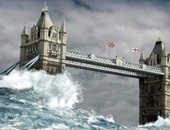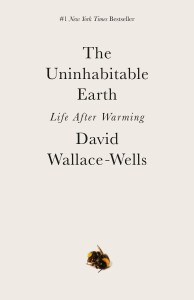The Uninhabitable Earth: Life After Warming by David Wallace-Wells was launched a year ago—on February 19, 2019. It is both a travelogue of the near future and a meditation on how that future will look to those living through it—the ways that climate change promises to transform global politics, the meaning of technology and nature in the modern world, the sustainability of capitalism, and the trajectory of human progress.
Interest has spread rapidly in the year since its publication. It was named one of the best books of the year by a host of top publications: The New Yorker, The New York Times Book Review, Time magazine, NPR, The Economist, The Paris Review, Toronto Star, GQ, The Times Literary Supplement, the New York Public Library, and Kirkus Reviews.
“The book has potential to be this generation’s Silent Spring,” wrote the reviewer for the Washington Post.
“Riveting. . . . Some readers will find Mr. Wallace-Wells’s outline of possible futures alarmist. He is indeed alarmed. You should be, too,” wrote The Economist.
The author frankly describes what an overheated world will be like. “It is worse, much worse, than you think,” says the book summary. “If your anxiety about global warming is dominated by fears of sea-level rise, you are barely scratching the surface of what terrors are possible—food shortages, refugee emergencies, climate wars and economic devastation.”
 The Uninhabitable Earth is also an impassioned call to action. For just as the world was brought to the brink of catastrophe within the span of a lifetime, the responsibility to avoid it now belongs to a single generation—today’s. ♠️
The Uninhabitable Earth is also an impassioned call to action. For just as the world was brought to the brink of catastrophe within the span of a lifetime, the responsibility to avoid it now belongs to a single generation—today’s. ♠️
Click here to read the review in the New York Times, by Jennifer Szalai.


